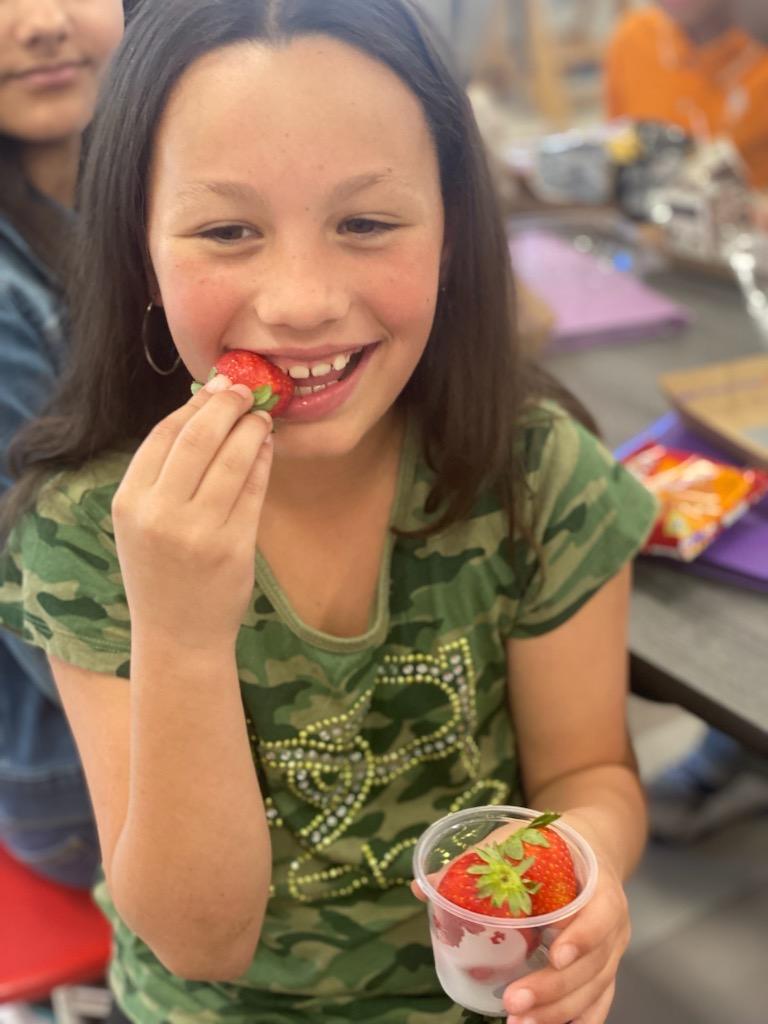
During the month of March, local strawberries will be served to school students at 230 school sites around the county.

School students are “berry” excited that their lunches are getting an added pop of color in March thanks to a partnership between Hillsborough County Public Schools and Wish Farms. The duo joined forces to supply fresh strawberries for school lunches at all district school sites.
Last year, the first year of the partnership, the district purchased 4,117 cases of strawberries (each case consisted of eight pounds of strawberries) from Wish Farms. The berries were washed and then sorted into half-cup servings.
Shani Hall, General Manager of Student Nutrition Services, said she didn’t realize if students would appreciate the locally-grown berries. “The kids went berserk to be served fresh, sweet strawberries and it became so popular that student nutrition managers starting doubling their orders because kids were asking for seconds,” said Hall.
So far this month, the district has purchased nearly 3,000 cases. Student nutrition managers at 230 school sites place their order and then the distributor, C-K, delivers the berries to the schools every week. Hall said the department serves 200,000 meals a day, including breakfast, lunch and dinner at some sites.
Hall is grateful that Wish Farms was able to supply the large amount of product the district required to serve its students. “To find a farm that would be able to get to all our our schools was our mission and Wish Farms was able to do that,” said Hall.
Wish Farms PR Manager Nick Wishnatzki said the company is proud to participate in the strawberries to schools program.
“Not only does it provide fresh and healthy berries to students in our community, it educates them about the farm and where their food comes from,” he said.
While March is strawberry month, Hall said she’s trying to incorporate more fresh from Florida foods on school lunch menus. On March 21, the District is hosting a Florida food day, featuring Florida grown and processed foods, including corn, milk, empanadas, green beans, oranges and tomatoes.
The effort to include more local foods in school meals was made possible by a grant from the U.S. Department of Agriculture (USDA). “We’ve made it a mission to break barriers,” said Hall. “We couldn’t understand why our Florida kids weren’t getting Florida grown produce.”
